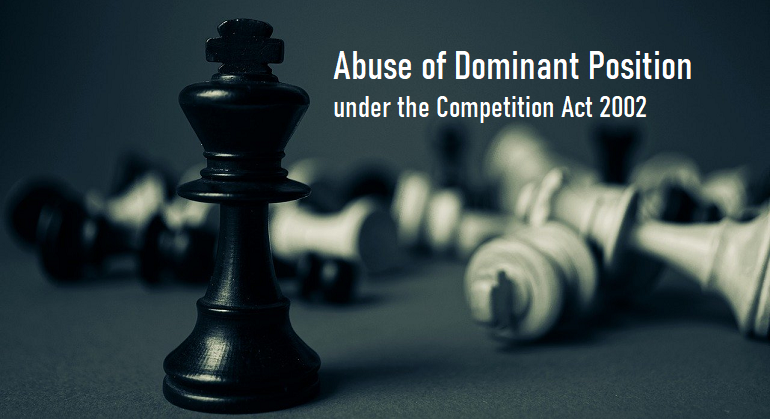

Abuse of Dominant Position under the Competition Act, 2002
The Competition Act, 2002 focuses to strengthen the competition, safeguard the interests of the consumers and ensure freedom of trade in markets in India. It permits a healthy competitive culture that encourages the business to be competitive, innovative and fair. This increases consumer welfare and aids in economic growth.
In accordance with the explanation added to section 4 of the Competition Act, 2002, dominant position means the strength of an enterprise in the relevant market in India which allows the enterprise to operate independently of competitive forces prevailing in the market and to affect its market or competitors or consumers in its favour.
Abuse of Dominant Position involves:
- The imposition of unfair price or conditions
- Limiting the market or production
- Predatory pricing
- Creating barriers to entry and applying dissimilar conditions to similar transactions.
Determination Of Abuse Of Dominant Position
There are mainly three steps in determining the abuse of a dominant position. Firstly, is the determination of a relevant market that is analyzed on the basis of geographical market or relevant product. The second step is the determination of in that relevant market and third step is the determining of abuse of dominant position.
Relevant Market:
In accordance with section 2(r) of the competition act, 2002, relevant market means the market which may be determined by the commission with reference to the relevant geographical market or relevant product market or with regard to both the markets. The determination of the relevant market is the way to ascertain the defendant’s capacity to destroy or lessen the competition. Thus, it is necessary to determine the relevant market and it must be defined from both product and geographical point of view.
Dominance:
Section 4(1) of the Competition Act, 2002 prohibits the abuse of a dominant position by any enterprise or group. Sub-section (1) says that no enterprise or group shall abuse its dominant position.
Abuse Of Dominant Position
Under competition law in any jurisdiction, Dominance is not considered bad, howerever, it has been globally accepted that the abuse of such dominance establishes an anti-competitive practice. The acts of abuse of dominant position are set out in section 4(2)(a to e) of the competition act, 2002 which are as follows :
- The imposition of discriminatory or unfair price or conditions also containing predatory pricing.
- Limitation of scientific or technical or product development.
- Denial of access to market, barriers to expansion or entry.
- Imposing supplementary obligations.
- Usage of a dominant position in one relevant market to enter another relevant market.
Penalties
- Give direction to the enterprise to cease such acts that amounted to abuse.
- The imposition of penalties of up to 10% of the average of the turnover for the last 3 preceding financial years.
- The Commission can pass an order to cause the split of the dominant enterprise so that does not abuse its dominant position.
Case Laws
M/s Saint Gobain Glass India Ltd. v. M/s Gujarat Gas Company Limited:
In this case, the CCI in order to determine the ‘relevant market’ took account of factors to be considered while determining the relevant geographic market and the relevant product market. The CCI stated that in determining the “relevant product market”, the Commission is to have to consider all or any of the following factors viz., the price of goods or services, exclusion of in-house production, physical characteristics or end-user of goods, consumer preferences, the existence of specialized producers and classification of industrial products, in terms of the provisions contained in.
M/s Fast Track Call Cab Private Limited v. ANI Technologies:
In this case, it was held that Ola was giving rebates, incentives, loyalties, predatory discounts. Here, the Commission noted that the act of Ola of requiring heavy discounts to its purchasers and bonus to its employees at the cost of bearing loss appears to be a well-devised plan of the enterprise prepared to exclude other market players out of the relevant market. This case shows that there has been a transit in the attitude of CCI regarding the protection of the traditional taxi service providers.
Conclusion
The Competition Act, 2002 was constructed as there was a need to move the focus from curbing monopolies to encourage competition both external and internal. Thus, through its authorities the Competition Act keeps a check on the abuse of the dominant position and other malafide trade practices in the relevant market and on receipt of any complaint, it takes required actions and on proving of the claims respective penalties are imposed on the defaulters.



